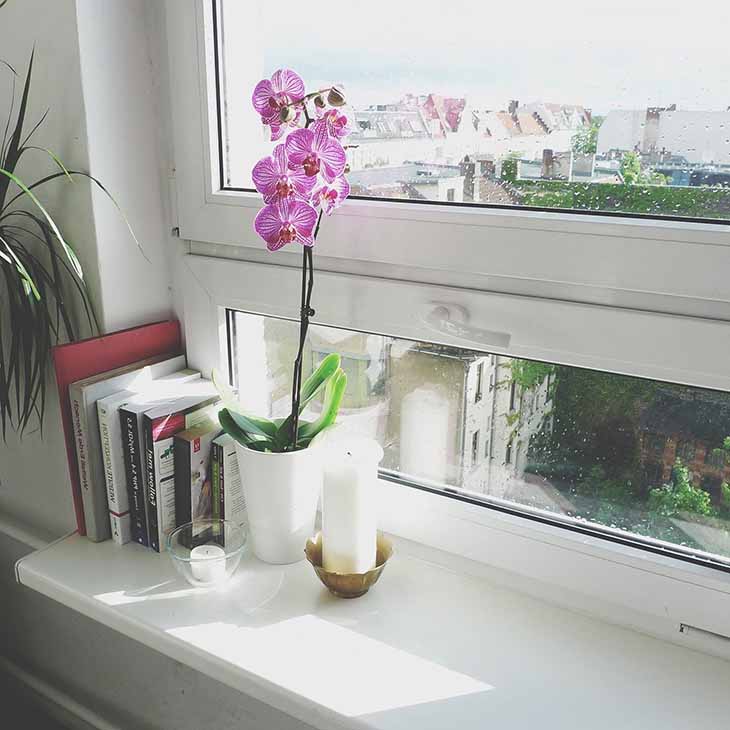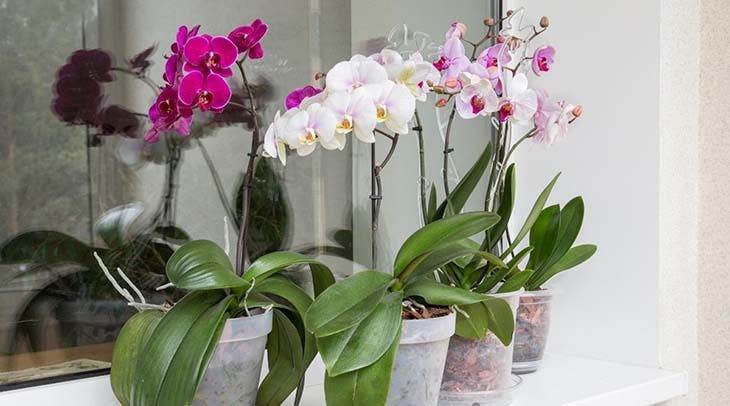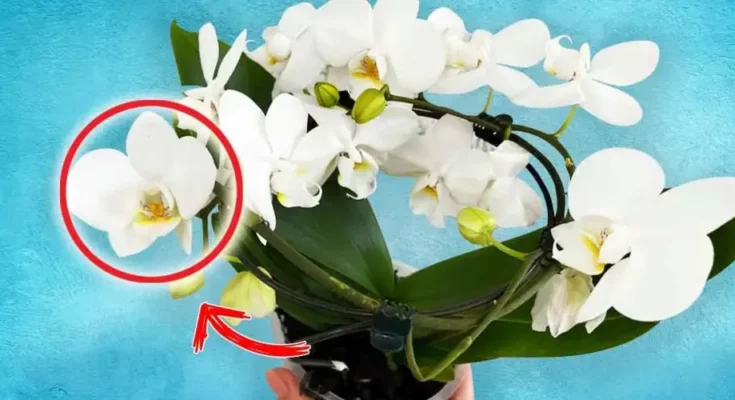Plant of tropical origin, the orchid brings a true touch of elegance and freshness to the home. This houseplant, whose colorful flowers resemble butterflies, requires a rather special flowering process. At the florist or even the supermarket, it seems like it’s always orchid season.
In reality, this plant does not flower all year round: its most common variety, which is easily found on sale, is almost always the “phalaenopsis” or “butterfly orchid”. However, these species only bloom in spring and summer, and certainly not in winter.
Precisely, during the winter season, when we find an orchid in bloom, it means that it has been artificially flowered, altering its vegetative cycle.
Also Read: How to Maintain an Orchid and Make It Bloom Again – The Step-by-Step Guide

But can we continue making this plant bloom all winter?
The answer is yes, although it would be best to let the orchid wilt. Therefore, it is important to respect its natural rest period, after flowering, until temperatures rise.
What to do to keep the orchid in bloom?
Here’s how to keep an orchid in bloom even in winter, taking special care of it until spring arrives to give us a hand with a climate more suitable for its growth!
keep her warm
You should know that the orchid likes summer and warm temperatures. Therefore, you will always need a lightweight frame.
First of all, you must keep your plant at a fairly high temperature, never lower than 21-22°C.
Thus, in a warm environment, the orchid continues to retain its flowers without prematurely withering due to the winter weather.
Also pay attention to sunlight, which should always be present, without directly touching the plant. It is therefore necessary to try to find a good balance: too much sun risks being fatal for it, while too little light can prevent it from flowering.
The best thing to do is keep the orchid on a windowsill with opaque glass or a filter curtain.
fertilize it
As a general rule, an orchid should never be fertilized during the winter months. However, for artificial flowering in this cold period, the plant must be fertilized using the same process that is applied during warm weather.
Therefore, you can fertilize it with a specific fertilizer based on nitrogen, phosphorus and potassium. This will be the fertilizer that will allow it to continue flowering for longer.
You should know that the orchid may fade after a few weeks. Don’t panic, your plant may bloom again after the first flowering. What is needed is to cut the stems on which the flowers have withered. Then place it in a cool place for fifteen days and reduce the frequency of watering. After this time, you can put it back in its place and little by little a new stem will come to life.

Water it frequently
Your orchids need to be watered regularly, but not too much to prevent the roots from rotting.
The best way to water it? Surely the immersion one, which consists of putting the plant in a sink or basin full of water for 20/30 minutes so that it only absorbs the water it really needs. Of course, remember to drain well after watering so that the water does not stagnate at the bottom of the pot. Regularly, you can spray some water on the leaves and roots.
The ideal time to water orchids is when you notice that the soil is no longer moist and begins to dry and harden.
Regularly spray water on the leaves and roots, this may be sufficient as irrigation.

Keep humidity high
A maintenance tip that applies to the orchid at any time of the year is to keep it in a place where the ambient humidity is high enough (between 60 and 80%).
In fact, with its tropical origins, this plant is used to growing in an environment where the humidity level remains constantly high.
Therefore, we strongly recommend that you install it in the bathroom: this is the room where the humidity is generally much higher than in the other spaces in the house.
Learn that when humidity is low, the orchid can have major problems with its leaves or roots.
Read also: How to make orchids bloom all year round? Add a single ingredient to irrigation water
Consequences and advice.
As we have already mentioned, when we make an orchid bloom in winter, its vegetative cycle is altered because we have accelerated its awakening.
Therefore, it is always preferable to let the orchid follow its natural cycle imposed by the normal change of seasons, without forcing its flowering.



